Eliciting Requirements from Stakeholders’Responses Using Natural Language Processing
2021-04-27MohammedLafiBilalHawashinandShadiAlZubi
Mohammed Lafi,Bilal Hawashin and Shadi AlZu’bi
1Department of Soft ware Engineering,Faculty of Science and Information Technology,Al-Zaytoonah University of Jordan,Amman,11733,Jordan
2Department of Computer Information Systems,Facultyof Science and Information Technology,Al-Zaytoonah University of Jordan,Amman,11733,Jordan
3Department of Computer Science,Faculty of Science and Information Technology,Al-Zaytoonah University of Jordan,Amman,11733,Jordan
ABSTRACT Most soft ware systems have different stakeholders with a variety of concerns.The process of collecting requirements from a large number of stakeholders is vital but challenging.We propose an efficient,automatic approach to collecting requirements from different stakeholders’responses to a specific question.We use natural language processing techniques toget the stakeholder response that represents most other stakeholders’responses.This study improves existing practices in three ways:Firstly,it reduces the human effort needed to collect the requirements;secondly,it reduces the time required to carry out this task with a large number of stakeholders;thirdly,it underlines the importance of using of data mining techniques in various soft ware engineering steps.Our approach uses tokenization,stop word removal,and word lemmatization to create a list of frequently accruing words.It then creates a similarity matrix to calculate the score value for each response and selects the answer with the highest score.Our experiments show that using this approach significantly reduces the time and effort needed to collect requirements and does so with a sufficient degree of accuracy.
KEYWORDS Soft ware requirements;requirements elicitation;natural language processing
1 Introduction
Requirements can be defined as descriptions of the services that a system provides and the constraints on those services [1].
In other words,they are the system’s conditions or capabilities [2].The process of collecting and documenting system functions and constraints is called “requirements engineering” [3] and a crucial part of it is eliciting requirements to find customers’needs [4].
Engaging stakeholders in requirements elicitation is essential for getting accurate,complete,and consistent requirements [5].However,eliciting agreed requirements from a large number of stakeholders,each of whom has his or her own concern,is challenging.
Automating specific requirement engineering steps is an exciting area,but there are several associated challenges.Requirements engineering involves manual effort,and domain knowledge as well as methodological expertise and soft skills.High quality of requirements engineering is crucial,since it provides information for later stages of software development.Extraction requirements from natural language text is a problem of particular relevance,especially in the context of large-scale open-source development systems.
Requirements,as well as large parts of the software,are described using natural language or text [6,7].We can use Text Retrieval (TR) and Natural Language Processing (NLP) can be used to process information represented as text,to achieve many software engineering activities,including requirements analysis [6,7].
In the past,researchers have used many techniques to elicit requirements,including interviews and questionnaires.Although,interview is the most common elicitation technique [8],Wagner et al.[8] have pointed out the popularity of questionnaire as an elicitation technique and suggested that researchers should included it for further study.
The questionnaire elicitation technique may contain closed questions,such as multiple choice and true/false questions,or open questions,such as essay questions.Researchers have previously elicited requirements from stakeholders’responses using questionnaires with closed questions [9,10];the large number of responses received from open question questionnaire poses its own problems since reading and managing a large quantity of responses takes a very long time.
Therefore,determining the most representative stakeholder responses is somewhat tricky.Although,researchers have proposed many solutions,most of the previous work on the topic does not address the issue of selecting a single stakeholder response that represents all stakeholders’responses.Finding out which response is most representative can reduce the time and effort required to read all replies,and make collecting and eliciting requirements more efficient.
Our proposed approach is a new method that combines the interview technique with the questionnaire technique.Other means and techniques of recording stakeholders’responses such as personal interview and workshops can also be used with our approach.
This study’s goal is to propose a requirement collection method “agreed upon requirement”using NLP techniques that can help elicit “agreed upon requirement” from multiple stakeholder responses or opinions.NLP can support the requirements elicitation process by using similarity measurements to select the stakeholder response that best represents the stakeholders’majority opinion.
The approach can be broken down as follows:First of all,domain experts suggest open questions;these questions are then distributed to large number of stakeholders,who are scattered over a large area,as is the case in open-source systems.
These answers are then collected and the most representative response is elicited.This response is the initial requirement used to negotiate with stakeholders when creating the final set of requirements.
In this paper,we apply NLP techniques to identify and resolve an agreed upon requirement from multiple stakeholders’responses.We use and compare four popular similarity measures,and adopting term weighting model proposed by Li et al.[11],we use them to select the representative answer.As far as we know,these similarity measures and weighting model have not been used previously for selecting the most representative answer.
To conduct our experiment,we created different datasets with different data sizes since there is no sufficient dataset for this domain.To evaluate our method,we used performance (execution time) and accuracy methods,which means that the selected stakeholder response is the most representative of all others.
This paper is divided as follows.After a literature review in Section 2,Section 3 presents the proposed approach:Firstly,we propose an efficient automatic approach to select representative requirements from multiple stakeholders’responses to the same question or issue.Secondly,we conduct various experiments that show our approach is effective in terms of accuracy and performance (execution time) (see Section 4).Thirdly,we provide a tool to the proposed approach(see Section 4).Section 4 presents the experiment,Section 5 presents the discussion,and Section 6 presents the conclusion and implications for future work.
2 Related Work
There has been an increase in the use of TR and NLP in software engineering [6,7].The use of NLP in software requirements phase was discussed early in [12–16].
Arora et al.[17] previously described how to use natural language techniques to process requirements and check that they conform to requirements templates.In another work,Arora et al.[18] describe how to use natural language technique to extract glossary terms.
Kurtanovi´c et al.[19] use machine learning to classify requirements as functional and nonfunctional,but they use NLP to tokenize,remove stop words,and lemmatize requirements.In another work,Kurtanovi´c et al.[20] used NLP to analyze user reviews.
Khan et al.[21] propose a framework for prioritizing requirements.Their work focuses on requirements after requirement discovery phase.
Barbosa et al.[22] propose an approach to cluster requirements using NLP techniques such as tokenization,stop word removal,stemming,and similarity measures.They use Vector Space Model (VSM) to represent the requirements.Barbosa et al.[22] have performed an experiment using 50 user stories proposed by Cohn [23].However,their goal was to cluster and sequence requirements,not to elicit requirements.
Johann et al.[24] propose an approach to extract features from app stores using both app descriptions and user reviews.They apply NLP techniques,such as tokenization,removing stop words,and filtering,to get the set of related terms.They then extract and match the features from both app descriptions and user reviews.
Berry et al.[25] discuss using of NLP in different software engineering tasks.They argue that getting high recall and high precision at the same time is difficult,so the NLP tool is preferable for get high recall instead of high precision.
Bakar et al.[26] propose using NLP techniques to extract a software functionality features from public data such as user reviews.
The approach of Guzman et al.[27] is to extract features from app reviews and assign either positive or negative sentiments to these reviews.The approach consists of a set of steps:Firstly,they extract reviews from Apple app store;then,they process them by tokenization and stop word removal;next,they use the collocation algorithm provided by Natural Language Tool Kit(NLTK) to create features;they then use the Latent Dirichlet Allocation (LDA) a topic modeling algorithm to assign topic to the extracted features;they also assign a value ranging from 5 (as a positive) to−5 (as a negative);finally,they perform experiments on five app reviews.Their results seem promising.
Sampaio et al.[28] use NLP techniques to identify aspects of corpus-based represented as an unstructured source of requirements.
App stores such as the Apple App Store,Google Play,and Blackberry World,provide assorted information about apps,including app description from development companies,user comments,feedback ratings,price and the number of downloads [29].Harman et al.[29] call this app store repository mining.They have proposed an approach to extract features from Blackberry World app store,which is composed of the following phases:They first use web crawling tool to extract information from Blackberry World app store;then,they parse the collected information using pattern template;Next,they extract features using a five-step algorithm,in which the features pattern is identified,noise words are filtered out,word frequency and collocation analysis is performed,and features are clustered using a greedy algorithm.
Falessi et al.[30] have studied and evaluated different NLP techniques and their use for equivalent requirements identification.They argue that their results are applicable to similar applications.
Natt och Dag et al.[31] describe an NLP approach that links customer wishes and product requirements.They use vector space to represent requirements and cosine similarity to calculate similarity between customer wishes and product requirements.Their approach is an improvement on previous methods that rely on a keyword search,but they suggest three ways for further improvement:Using different similarity measurements,using the previous discovered similarity between requirements,and incorporating semantics similarity instead of syntax similarity.
Ferrari et al.[32] describe using NLP in requirements engineering from four dimensions:Discipline,dynamism,domain knowledge,and datasets.By discipline they mean using NLP to check the requirements’compliance to standards and the requirements’ambiguity.By dynamism they mean using NLP for requirements tracing and categorization.By domain knowledge they mean using NLP and data-mining for topic modeling of existing requirements and as a recommender system to elicit requirements.Ferrari et al.emphasize the importance of datasets in NLP.They argue that datasets are scare for two reasons:The confidentiality of requirements,and datasets needing human intervention to create them.
Salton et al.[33] emphasize on the importance of including weights in text similarities comparisons.
Li et al.[11] propose an approach to compute the similarity between two sentences.First,they represent the sentences using VSM,using words that include the two sentences.They set the vector as follows:If the word exists in the sentence,they set the corresponding value to 1;otherwise,they set the value to the similarity score between that word and other words.Second,they calculate the similarity between the two vectors using cosine similarity.They also propose a method to take the order of the words into consideration.However,we do not consider the order of the words because it may not be essential in the response.
Okazaki et al.[34] argue that aggregating similarity values simply obtains the sentence similarity of all word pairs.
Kengphanphanit et al.[35] introduced a technique to extract requirements form social media.Also,they classified requirements into functional and non-functional requirements.
Our proposed approach works in a setting in which there is a large number of distributed stakeholders;this idea is not presented in any of the above works.There is also a lack of work aiming to find the representative response from a large number of responses,even though this is essential,and was the motivation behind this study.
3 The Proposed Approach
Our proposed approach consists of four main phases (see Fig.1).The first phase (the requirements collection process),is collecting requirements from stakeholders.Stakeholders are provided with an online form that containing a set of pre-prepared questions.The different stakeholders’responses to these questions are then collected (see Fig.2).In the second phase (the requirements preprocessing phase),the approach preprocesses stakeholders’responses,using NLP techniques,to extract the set of terms/and/or words that form the -stakeholders’responses,as described in Subsection 3.1.In the third phase (the requirements selection phase),we use a selection algorithm to choose the stakeholder’s response that best represents the majority of other responses,as described in Subsection 3.2.In the fourth phase (the validation phase),we validate the proposed approach’s result by comparing our result with the expected result.The validation is done by human coders since this has been suggested by many other researcher [18–20,22].
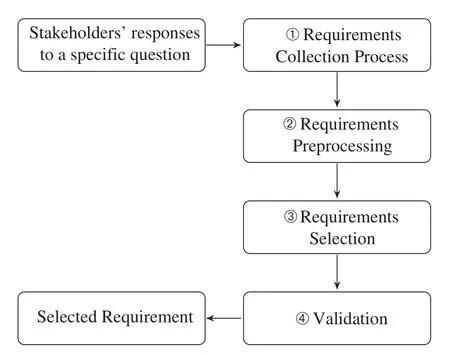
Figure 1:The four main activities of the proposed process:Requirements collection process,requirements preprocessing,requirements selection,and validation

Figure 2:Collection of requirements by getting the stakeholders’responses
Before we go into more detail about the four phases of our approach,it is important to describe the approach’s setting.Falessi et al.[30] use a combination of four dimensions in their work:An algebraic representation model,a term weighting model,a term extraction approach,and a similarity measure.Their work shows this combination is effective for finding equivalent requirements in reuse systems,which is relevant to our application in finding the best stakeholder response.
We adopted the approach of Falessi et al.[30].Furthermore,we use the VSM as representation model,because it has clear semantics,and it has been widely used by other researchers in similar studies.For term extraction,we use a simple term extraction pipeline consisting of the following stages:Tokenization,stop word removal,and lemmatization.For the term weighting model,we use a model proposed by Li et al.[11] and adopted by Guzman et al.[27],Johann et al.[24],and Kurtanovi´c et al.[19].According to this model,if the term exists,then the approach assigns one as term weight.Otherwise,the model assigns the similarity factor between the term and other terms as term weight.However,our approach does not consider the order of the words;instead,it considers them as a bag of words.Choosing a similarity metric is not prescribed theoretically [36],so we study the performance and accuracy of well-known vector similarity metrics,cosine,dice,Jaccard (the Tanimoto coefficient),and overlap to find the more suitable one in this application domain (see Tab.1).
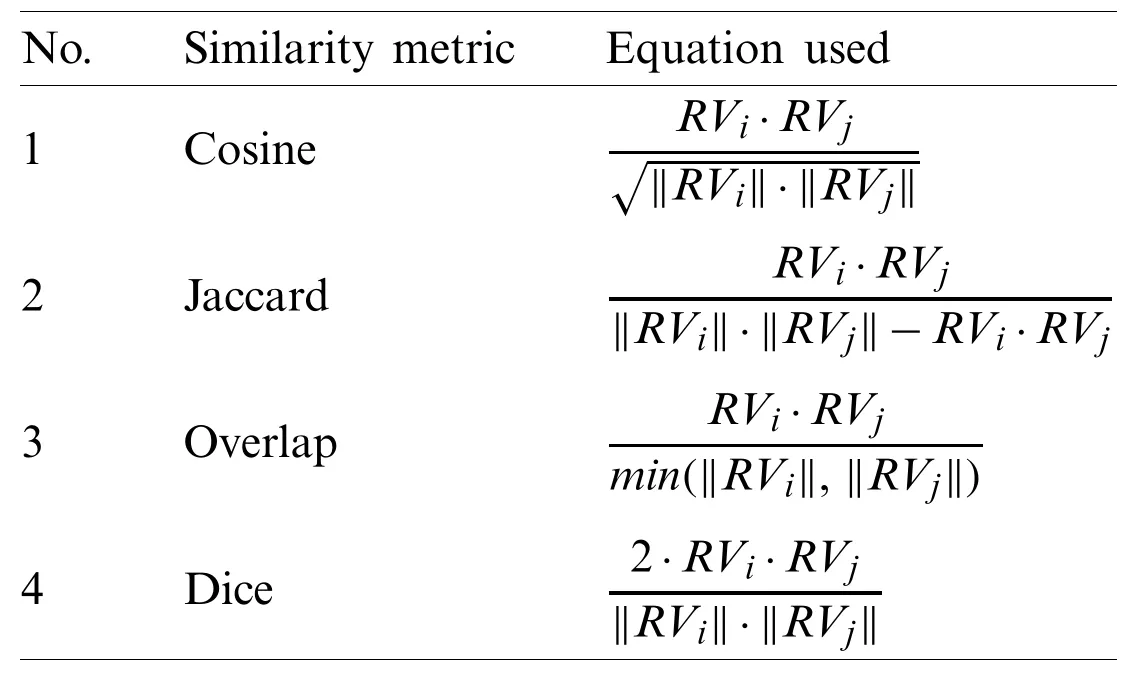
Table 1:Similarity metrics and the equations used to calculate them
Our approach is a NLP language model in essence it starts by processing,tokenizing,and lemmatizing the requirements.Then,it represents these requirements as vectors.Also,our approach uses mathematical functions,such as cosine,jaccard,overlap and dicce,to compute the similarity between different vectors that represent requirements.Also,it selects the stakeholder response that represents most other stakeholders’responses using a numerical value.
Falessi et al.[30] adopt a similarity threshold of 0.5,while Johann et al.[24] adopt a similarity threshold of 0.7.The similarity threshold seems to be domain-dependent.
When the similarity threshold increases,more constraints are added to answers to be considered a candidate.Using this threshold would increase the accuracy but would decrease the number of resulting candidate answers.
We performed preliminary sensitive analysis experiments that led us to use 0.7 as a threshold.
3.1 Requirements Preprocessing
The goal of this phase is to create a list of terms appearing in the stakeholders’responses.However,most large systems consist of a large number of stakeholders,so the list will be enormous.Therefore,the approach uses NLP techniques to find the most representative response.To get a list of words/terms,we perform the following steps:first,we identify the words/terms that form each stakeholder’s response by using the word tokenization operation that is part of the NLTK;then,we remove any unnecessary words by employing the stop-words removal operation from the NLTK;next,we normalize each word and/or term by reducing their different forms to a single form,by using the NLTK lemmatization operation1We use lemmatization instead of stemming because lemmatization produces terms that are easier to understand than stemming.;finally,we add words/terms to the words/terms list (see Figs.3 and 4).
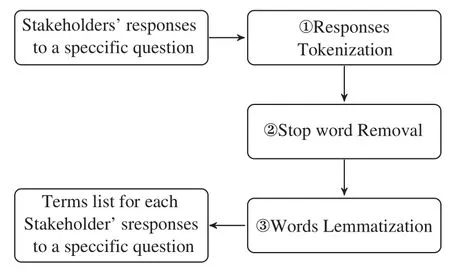
Figure 3:Requirements preprocessing to extract terms from stakeholders’responses
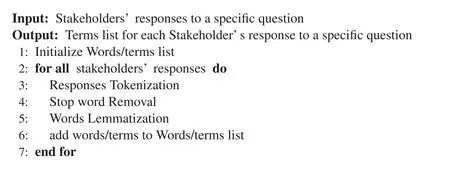
Figure 4:Detailed steps of how terms are extracted from stakeholders’responses
3.2 Requirements Selection
The goal of this phase is to find the central stakeholder response that can represent most of other stakeholder responses.Similarity between requirements has been used by many researchers to elicit requirements [13],extract glossary terms [18],analyze user reviews [19],classify requirements [20],cluster requirements [22],extract functionality features from app stores [24],and extract functionality features from public data [26].Therefore,we used similarity between stakeholders’responses to pick the most representative response.To achieve this goal,we performed four steps(see Figs.5 and 6).
The first step is create the Lexical Semantic Vector (LSV) based on the words/terms list obtained from the previous stage.LSV contains all the distinct words in all stakeholders’responses for a specific question.Let the stakeholder responses to a questionkbe the setR,whereR={R1,R2,...,Rn}.Then,LSV={terms∈R1∪terms∈R2∪...∪terms∈Rn}.Next,we created an LSV response vector (RV) for each stakeholder response as follows:

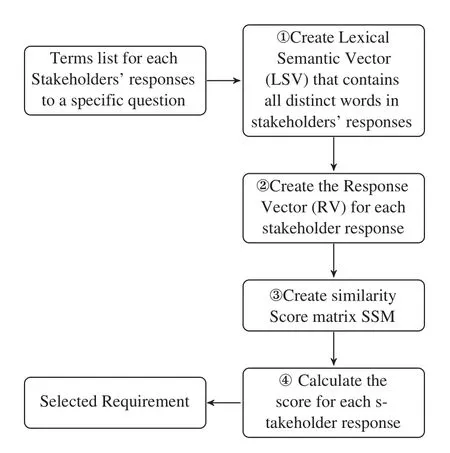
Figure 5:Selection of the most representative stakeholder’response
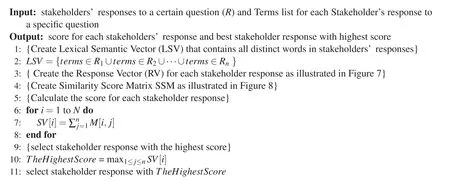
Figure 6:Detailed steps on how to select the most representative responses
Fig.7 illustrates the detailed steps of creating the response vector (RV).
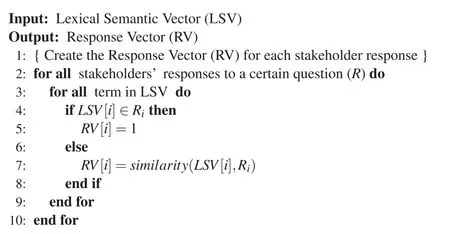
Figure 7:Creating the response vector (RV) for each stakeholder response
We used the similarity function provided by the NLTK and implemented in Python to calculate the similarity between two termstermiandtermj.The similarity function in NLTK depends on NLTK wordnet.To compare all stakeholders’responses,we created a similarity matrix (SM),which stores the similarity between all response pairs.The similarity between two stakeholders’responses represented as response vectors asRViandRVjis calculated using one equation from Tab.1 depending on the similarity metric used as illustrated in Fig.8.The resulting similarity matrix is illustrated as follows:

wheremijis the similarity betweenRViandRVjcomputed using an equation from Tab.1 andnis the number of stakeholders’responses.
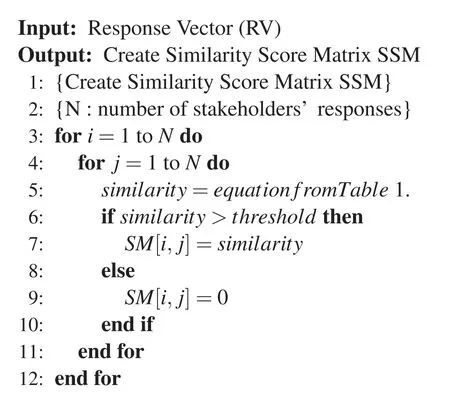
Figure 8:Creating similarity score matrix SSM
Okazaki et al.[34] state that sentence similarity can be calculated by aggregating the similarity values of all words pairs.Therefore,we used a similar approach calculating the similarity between all stakeholders’responses by adding the similarity values between stakeholders’responses pairs.To do this,we added together the values in each similarity matrix row.We propose a score vector(SV) to hold values of the summation similarity values.We propose the calculation of SV entries as follows:

After calculating the SV,the stakeholder response corresponding to the maximum value in the SV is selected as the response that can best represent most stakeholders’responses.
4 Implementation and Experiment
We conducted an experiment to demonstrate the applicability of the proposed approach to select the most representative stakeholder response.This can be done by ensuring that the proposed approach selects the requirement that has the highest calculated score depending on the similarity of each stakeholder response to all other responses and compare it with the expected result determined by human coders who determine the result using manual interpretation.
The dataset used in the experiment is explained in Subsection 4.1 and the selection of programming language is described in Subsection 4.2.The experiment is described in Subsection 4.3 and results are described in Subsection 4.4.
4.1 Dataset Generation
A dataset is a set of requirements that is annotated with semantic information.In our study,this semantic information indicates whether the requirement represents all other requirements.Finding and using datasets in software requirements engineering is an essential and challenging task [32].
To validate our study,we need a dataset related to the elicited requirements from multiple stakeholders.There was a lack of sufficient datasets in this domain,so we prepared a set of ten questions,each with many possible answers,about a university student registration system.The stakeholders can answer these questions using natural language.All stakeholders (students)participated voluntarily,and it was not an academic assignment.Since the criterion of stakeholder eligibility is that the stakeholder knows the business domain,all students were eligible to participate.The list of questions is shown in Tab.2.
We collected four 256-answer datasets and combined them to create six 512-answer datasets;we then combined the four 256-answer datasets to create 1024-answer dataset.We also collected another 1024-answer dataset.Tab.3 shows a sample of the collected answers.
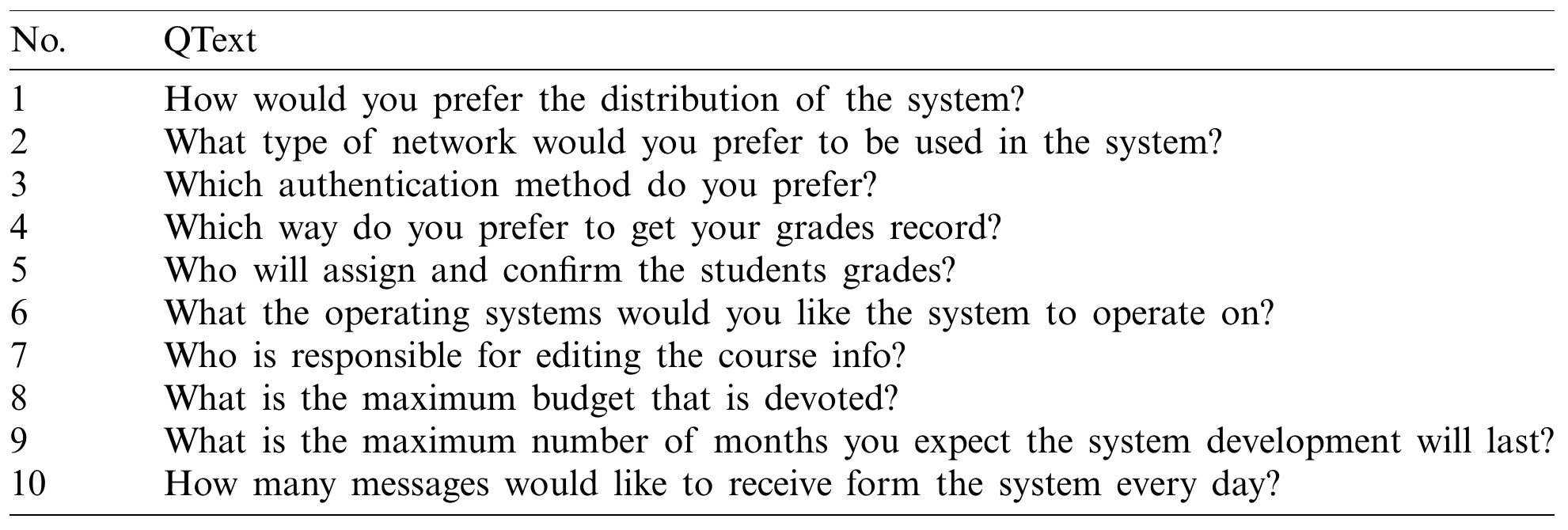
Table 2:Sample of questions in a questionnaire about the university registration system
4.2 Programming Language Selection
We implemented the proposed approach using Python,which has many packages that support NLP.We used Python’NLTK package,which is commonly used in NLP.The code and datasets are available through GetHub repository.
4.3 The Experiment
To demonstrate and validate our study,we carried out the following experiment.First,we prepared a set of questions concerning the system functions based on previous domain knowledge.These questions were then answered by multiple stakeholders using natural language.For example,if the question was,“Who will assign and confirm the students’grades? ” the possible stakeholders’responses could be,“The instructor assigns and confirms the grades,” “The registrar assigns and confirms the grades,” “The dean assigns and confirms the grades,” or “The department chair assigns and confirms the grades.”A sample of the stakeholders’responses are shown in the second column in Tab.3.

Table 3:Four stakeholders’responses and list of words for each of them after pre-processing
We then decided which answer was the best representation of all the others by selecting the stakeholder response with the highest percentage of stakeholder agreement for each question’answer that combines each stakeholder’response.
Two groups of human coders,each composed of three people,used this method to validate its result.To avoid bias,the two groups performed their inspections separately,before completing the work.We used majority voting in cases of disagreement.
Next our approach decided which response was the most representative of all other answers.
Finally,the two human-coder groups compared their expected result with the approach’s result and verified that the approach performed correctly.
The approach worked as follows.After recording the stakeholders’responses,our approach starts the reprocessing stage,in which the stakeholders’responses are processed through three steps:Tokenization,removal of stop words,and lemmatization.The result of this stage is a list of words for each stakeholder response.The third column in Tab.3 shows a sample of lists of words.
Depending on the final word list,the approach creates an RV or each stakeholder response.The length of the RV is the number of words,and the dimensions of the RV-matrix are the number of words by the number of responses,depending on the dataset used.The similarity matrix is then created.The similarity matrix dimensions are the number of responses multiplied by the number of responses and values ranging between 0 and 1.(Because of their large sizes,both the RV and the similarity matrix cannot be shown here.) Next,the approach creates the SV using Eq.(2).
4.4 Results
Tabs.5–8 show the proposed approach’s performance and accuracy using cosine,Jaccard,Overlap and Dice similarity metrics,respectively.
Tab.4 shows a comparison of the approach’s performance and accuracy using different similarity techniques on different datasets.
As we can see from Tab.4 and Figs.9 and 10,
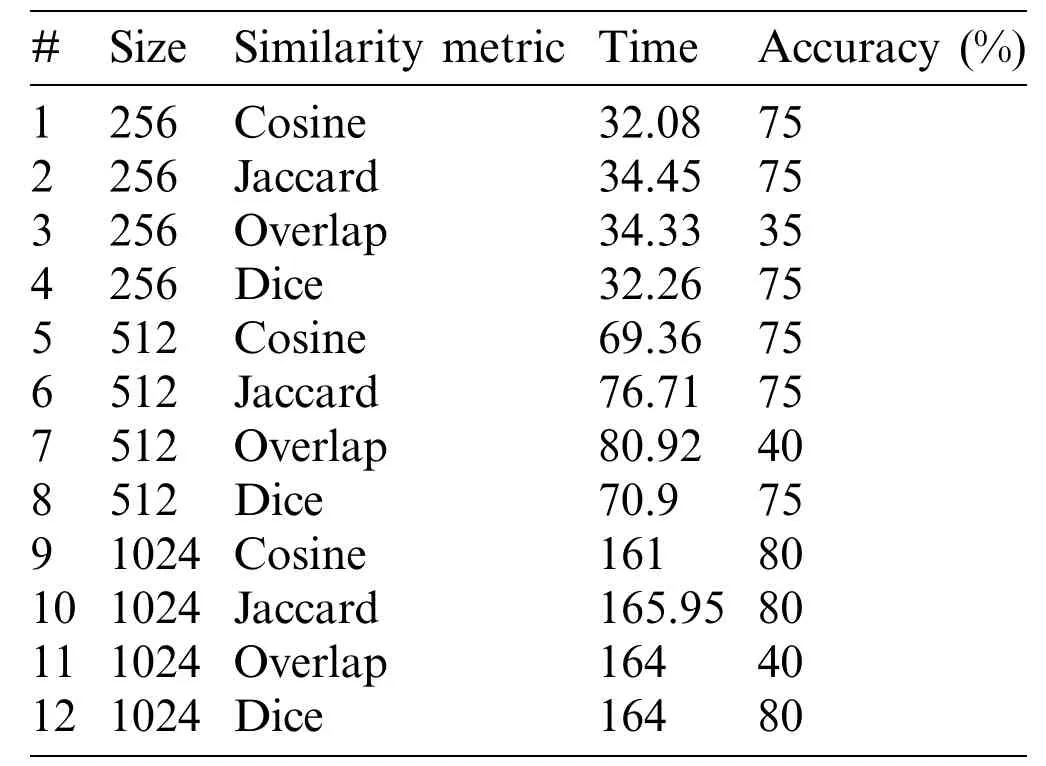
Table 4:Performance (execution time) and accuracy of different similarity metrics with an increasing dataset size
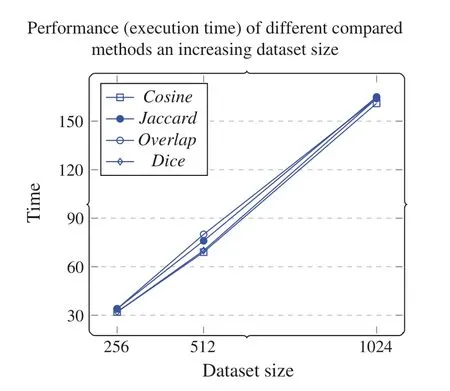
Figure 9:Performance (execution time) of different compared methods with an increasing dataset size
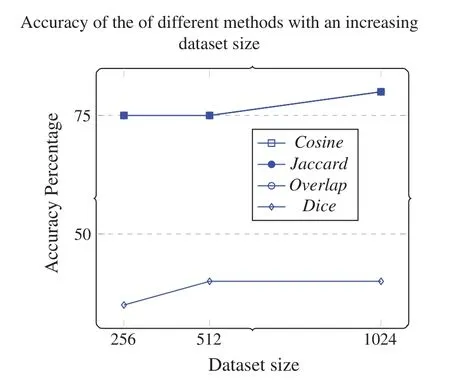
Figure 10:Accuracy of different compared methods with an increasing dataset size
• The approach selects the responses that best represent the stakeholders’responses in up to 80% of cases as the dataset size increases.However,the performance (execution time)increases as dataset size increases.
• The best performance achieved by the approach was the one using cosine similarity metric,which is compatible with results achieved in other studies [30].
• This approach’s accuracy was similar using either cosine,Jaccard,or dice,and the worst accuracy achieved by the approach used an overlapping similarity metric.
The two human-coder groups verified that the response selected by the approach is the correct response and that the approach performed correctly.
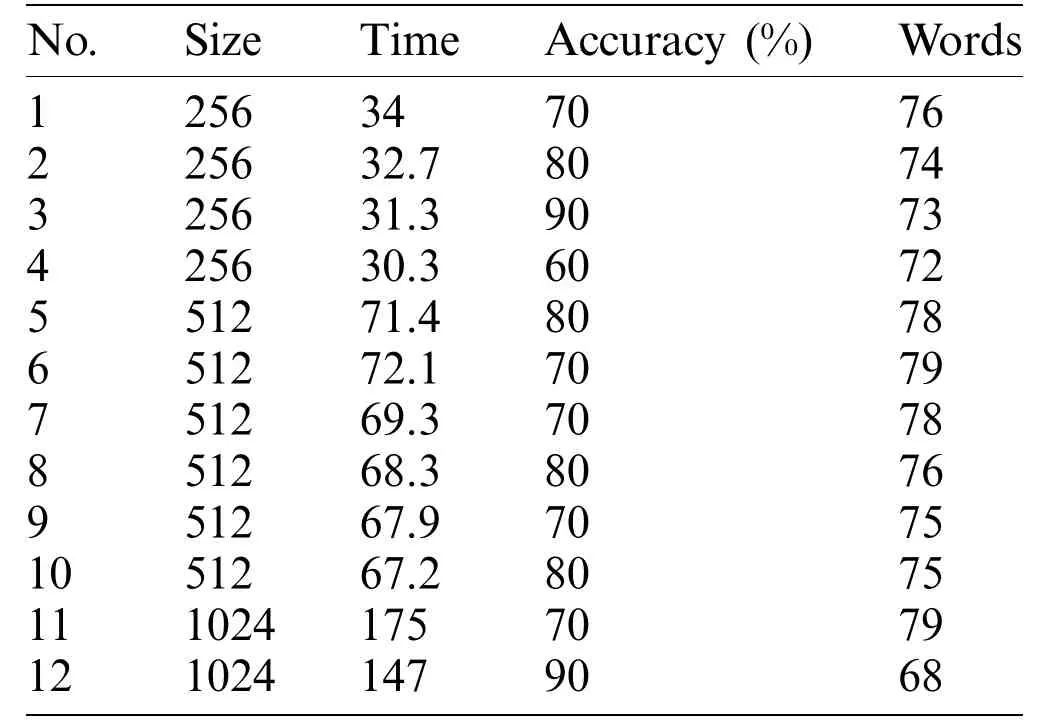
Table 5:Cosine similarity metric performance (execution time) and accuracy with an increasing dataset size
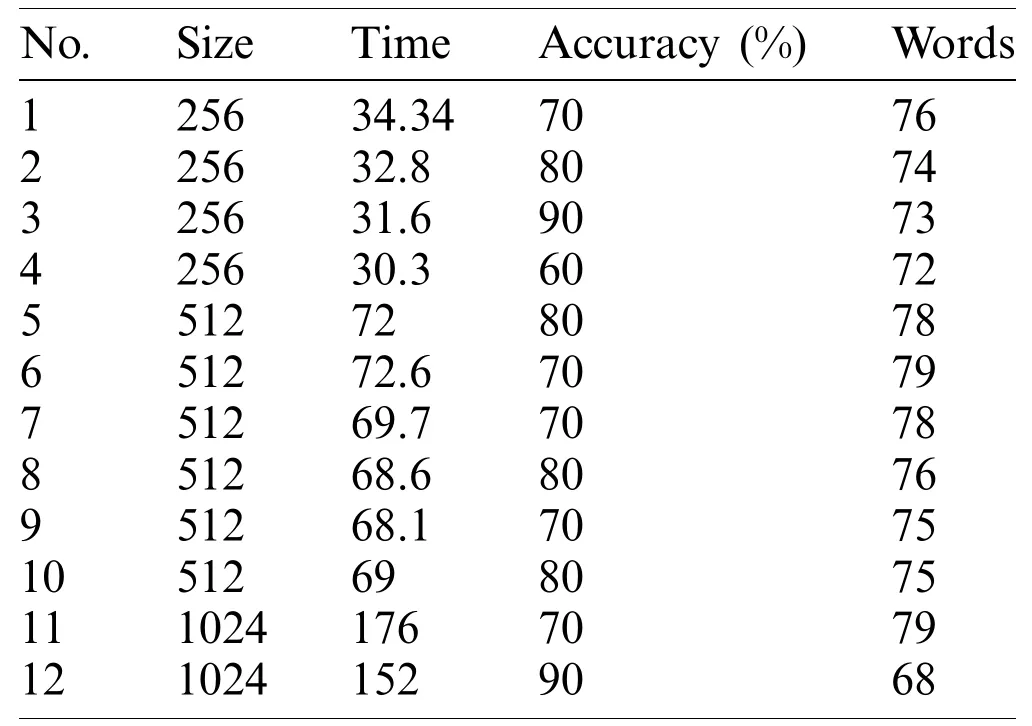
Table 6:Dice similarity metric performance (execution time) and accuracy with an increasing dataset size
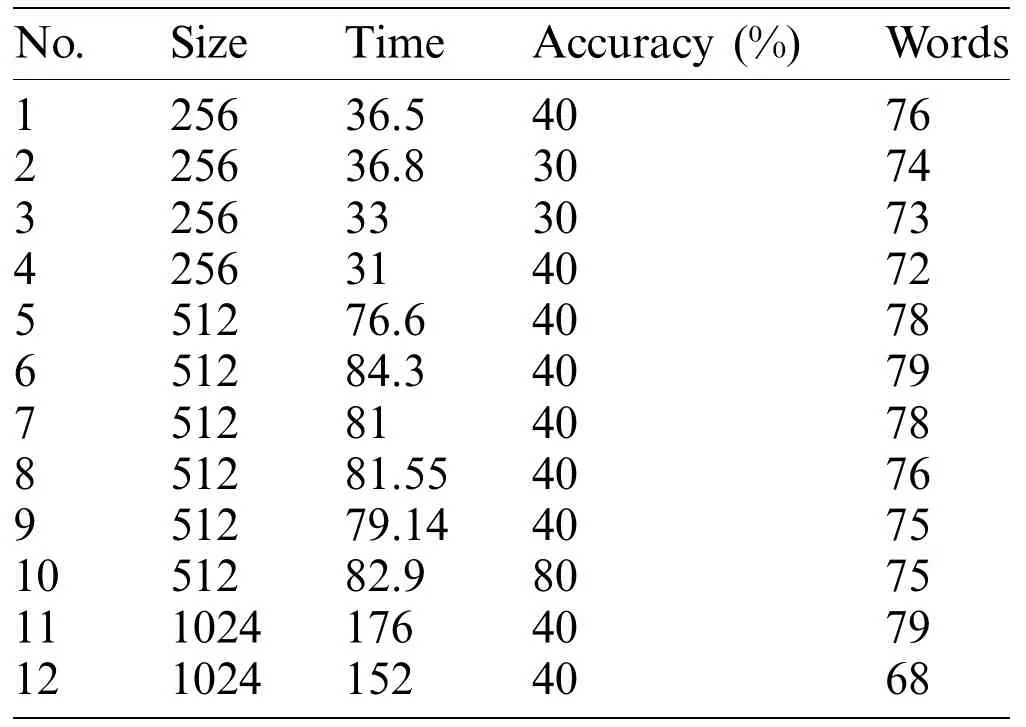
Table 7:Overlap similarity metric performance (execution time) and accuracy with an increasing dataset size
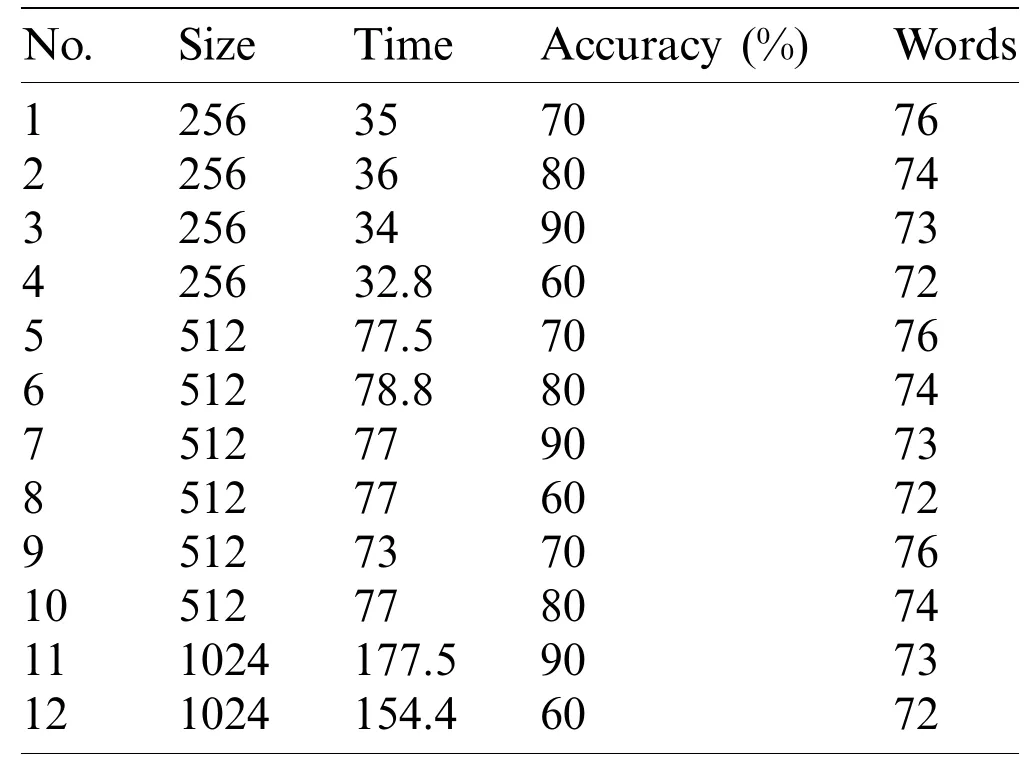
Table 8:Jaccard similarity metric performance (execution time) and accuracy
5 Discussion and Future Work
Our approach intended to find the most representative stakeholders’response and followed a systematic method to achieve this goal.Achieving this goal will enhance the process of eliciting and collecting requirements in large and diverse stakeholders’environments.Achieving this goal will also help software engineers and system analysts to find out the opinion of the majority of stakeholders.Knowing this will help enormously help in developing applications suitable for stakeholders.
Traditional elicitation techniques such as interview and focus groups and more advanced technique such as storyboard and prototyping are effective techniques to collect requirements from stakeholders.However,these traditional techniques suffer from the need of face-to-face interaction with stakeholders.In large scale systems and distributed system the direct interaction is impossible.Therefore,employing our proposed approach can address this shortcoming enabling developers to collect requirements from large number of stakeholders in distributed systems.
We choose using NLP approaches to process requirements instead of traditional approaches for the following reasons.The accuracy of our approach is better than the traditional approach in finding the most representative stakeholders’response.Also,our approach is more scalable than the traditional approach in terms that the number of stakeholders and number of requirements processed can be increased.In addition,our proposed approach is more robustness than traditional approach in terms our proposed approach performance is stable despite if the requirements have some noise or some of stakeholders provide wrong answers.
The size of the data used ranged from 256 to 1024 elements.We understand that the larger the dataset the better;nevertheless,we believe that the datasets used are adequate to validate the proposed approach’s accuracy.While we believe that there is a wide variety of representations of requirements,and that each system has its own peculiarities,we argue that our approach can be applied to other datasets.We encourage other researcher to use our method on different datasets of different sizes.
The final words list,explained in Subsection 4.3,shows a number of strange words “o”,“le,”and “sm.” These words are the result of using the NLTK’s stemmer.Enhancing this stemmer is beyond the scope of this paper.
The work we have carried out here could be extended in various directions.For example,we could consider more similarity measures and compare them with the used similarity measures.We could also use text summarization to further improve our method’s accuracy Our work in this study aims to encourage researchers to perform their own studies on this topic,in which more datasets are collected;this is an essential element in the experiment.In the future,we plan to consider sentiment analysis of stakeholder responses to see if stakeholders agree or disagree with the suggested requirement.Further evaluation measurements could be used in further study.
6 Conclusion
In this paper,we have demonstrated how our approach collected user requirements from stakeholders’responses represented as text.The approach converts user responses,represented as text,into terms using NLP techniques before applying similarity measures to find the most representative answer.We carried out an experiment to show our approach’s accuracy and effectiveness.Using this approach enhanced the process and reduced the time needed to collect the agreed requirements from multiple stakeholders.
Funding Statement:The author(s) received no specific funding for this study.
Conflicts of Interest:The authors declare that they have no conflicts of interest to report regarding the present study.
杂志排行
Computer Modeling In Engineering&Sciences的其它文章
- Nonlinear Problems via a Convergence Accelerated Decomposition Method of Adomian
- Exact Run Length Evaluation on a Two-Sided Modified Exponentially Weighted Moving Average Chart for Monitoring Process Mean
- An Effective Feature Modeling Approach for 3D Structural Topology Design Optimization
- Three-Dimensional Modeling of the Retinal Vascular Tree via Fractal Interpolation
- Experimental and Numerical Study on the Shear Strength and Strain Energy of Rock Under Constant Shear Stress and Unloading Normal Stress
- A Three-Stage Cutting Simulation System Based on Mass-Spring Model
